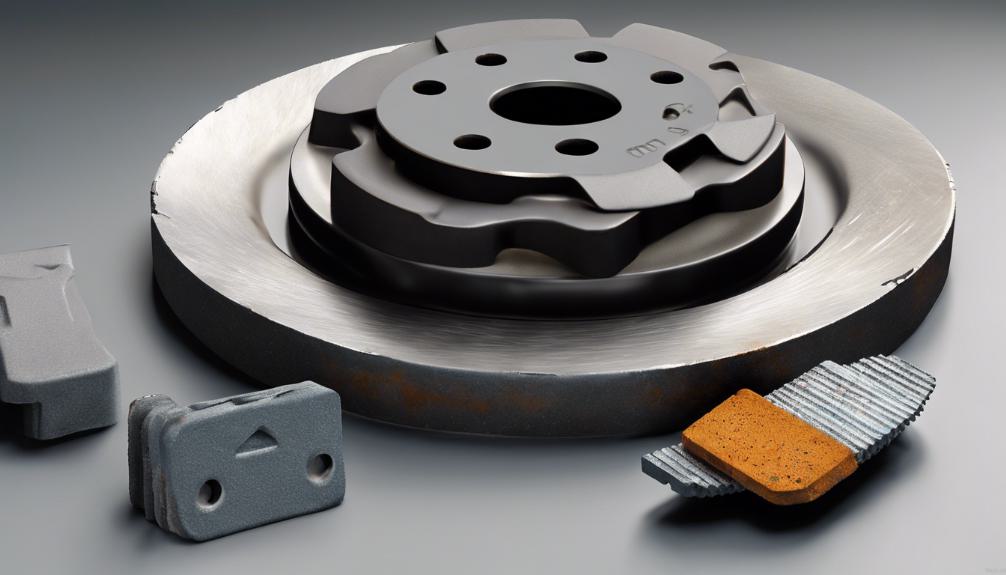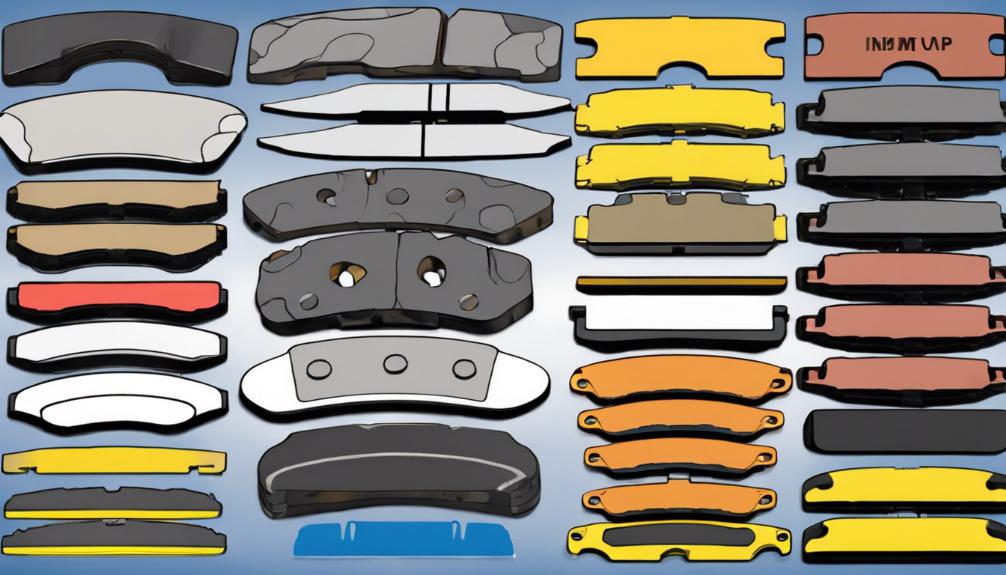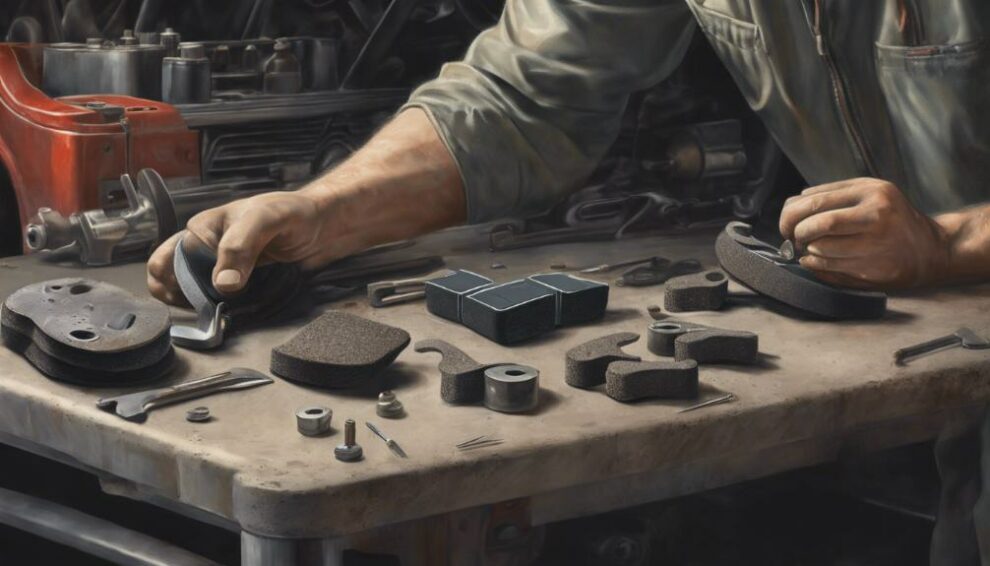To maintain safe driving, consider replacing brakes every 50,000 miles under regular driving conditions. However, aggressive driving, stop-and-go traffic, or urban driving may necessitate earlier replacement.
Listen for squealing noises or notice decreased stopping efficiency, which signal brake wear. Regular inspections help catch issues early, preventing costly repairs.
To extend brake life, adopt smooth driving habits, avoid overloading, and keep up with maintenance. Different types of brake pads offer unique benefits.
When to replace brakes can vary, so understanding these factors will help you make informed decisions for best safety and performance.
What You Need to Know
- Regular brake inspections based on manufacturer’s recommendations are crucial.
- Signs of brake wear like squealing noises indicate the need for replacement.
- Performance issues such as increased stopping distances signal brake replacement.
- DIY brake checks and warning signs help identify when brakes need replacing.
- Mindful driving habits and regular maintenance extend brake lifespan.
Factors Affecting Brake Lifespan

Factors affecting brake lifespan can vary depending on driving habits, environmental conditions, and adherence to maintenance schedules.
The impact of driving style is significant; aggressive driving and frequent stops can accelerate brake pad wear. If you tend to brake abruptly or wait until the last moment to slow down, your brakes will wear out faster.
City driving and heavy traffic conditions also play a role in brake degradation. Stop-and-go traffic requires more frequent braking, leading to increased wear on the brake pads.
Whats more, environmental influences such as road conditions and weather can impact brake longevity. If you frequently drive on rough roads or in areas with extreme weather, your brakes may wear out more quickly.
To optimize your brake lifespan, it’s important to take into account how your driving style and the environment you drive in can affect the wear and tear on your brakes.
Importance of Regular Brake Inspections
Regular brake inspections are essential for ensuring the safety and performance of your vehicle’s braking system.
By conducting regular inspections, you can identify wear and tear early on, which helps prevent accidents and costly repairs.
It’s recommended to have your brakes inspected annually or every 20,000 to 70,000 miles, taking into account your driving habits and road conditions.
Following the manufacturer’s maintenance schedule for brake inspections is critical for ideal brake safety and function.
Paying attention to signs of brake wear, such as squealing noises or reduced responsiveness, is key for timely maintenance and ensuring brake safety.
Also, maintaining proper brake fluid levels and changing the fluid every two years is vital for the longevity and effectiveness of your braking system.
Regular brake inspections serve as preventive measures to address any issues promptly, enhancing the overall safety and reliability of your vehicle’s braking system.
Signs for Brake Replacement

When your vehicle’s braking system starts exhibiting signs such as squealing or grinding noises while braking, increased stopping distances, or a spongy brake pedal, it may be time to contemplate brake replacement.
Recognizing these signs promptly can help prevent costly repairs and guarantee safe braking performance. Here are three key indicators that it’s time to think about replacing your brakes:
- Brake wear indicators: Keep an eye out for built-in brake wear indicators that squeal when the brake pads are worn out, signaling the need for replacement.
- Performance issues: If you notice increased stopping distances or a spongy brake pedal that requires more pressure to engage, it’s important to address these performance issues promptly.
- DIY brake checks, warning signs: Conduct regular DIY brake checks by inspecting the thickness of the brake pads and looking out for warning signs such as vibrations or pulsations felt through the brake pedal or steering wheel, which could indicate potential brake system problems.
Tips to Extend Brake Lifespan
To extend the lifespan of your vehicle’s brakes, practicing mindful driving habits can greatly reduce wear and tear on brake pads.
Techniques such as anticipatory braking, where you gradually slow down by easing off the accelerator instead of sudden braking, can lessen the strain on your brake pads, increasing their longevity.
Avoid overloading your vehicle, as this can put extra pressure on the brakes, leading to faster wear and reduced efficiency.
Consistently maintaining a steady speed whenever possible also helps minimize wear and tear on the brake pads, ultimately prolonging their lifespan.
In addition to driving techniques, regular vehicle maintenance plays a significant role in ensuring excellent brake efficiency and longevity.
Check your brake fluid levels and tire inflation regularly, as these factors directly impact braking performance.
Professional inspections and maintenance are essential for identifying any potential issues early on, ensuring that your brake system remains effective and extending the lifespan of its components.
By combining mindful driving practices with proper vehicle maintenance, you can maximize the lifespan of your brakes and maintain excellent braking efficiency.
Different Types of Brake Pads

When considering brake pads, various types with distinct characteristics are available to suit different driving needs and preferences. Here are three common types to help you make an informed decision:
- Non-Metallic/Organic Brake Pads: These pads offer good stopping power and are budget-friendly options. They’re suitable for everyday driving and provide a balance between performance and affordability.
- Semi-Metallic Brake Pads: Known for improved heat dissipation, these pads are ideal for heavy-duty use. They offer enhanced durability and are a great choice for vehicles that undergo frequent braking or carry heavy loads.
- Ceramic Brake Pads: Ceramic pads excel in low noise levels, produce minimal dust, and perform exceptionally well in high-temperature conditions.
They’re a premium option for those seeking superior braking performance and a cleaner wheel appearance.
Different pad materials affect brake feel, noise levels, and wear characteristics. Upgrading brake pads can enhance braking performance to cater to specific driving needs, ensuring safety and efficiency on the road.
Costs Associated With Brake Replacement
Brake replacement costs can vary depending on factors such as the vehicle model and labor expenses involved. Typically, brake pad replacement costs range from $100 to $300 per axle.
The variation in costs is influenced by the quality of parts used and the complexity of the job.
To guarantee brake repair savings, it’s recommended to obtain price estimates from auto repair shops beforehand. By doing so, you can effectively budget for brake pad replacement and avoid unexpected expenses.
It’s essential to have the braking system inspected by professionals to accurately assess costs and identify any additional repairs or replacements that may be necessary.
Transparent cost estimation is key in understanding the expenses associated with brake maintenance.
Being informed about the factors that impact brake maintenance costs can help you make sound decisions regarding your vehicle’s upkeep and safety.
As an Amazon Associate we earn from qualifying purchases.










